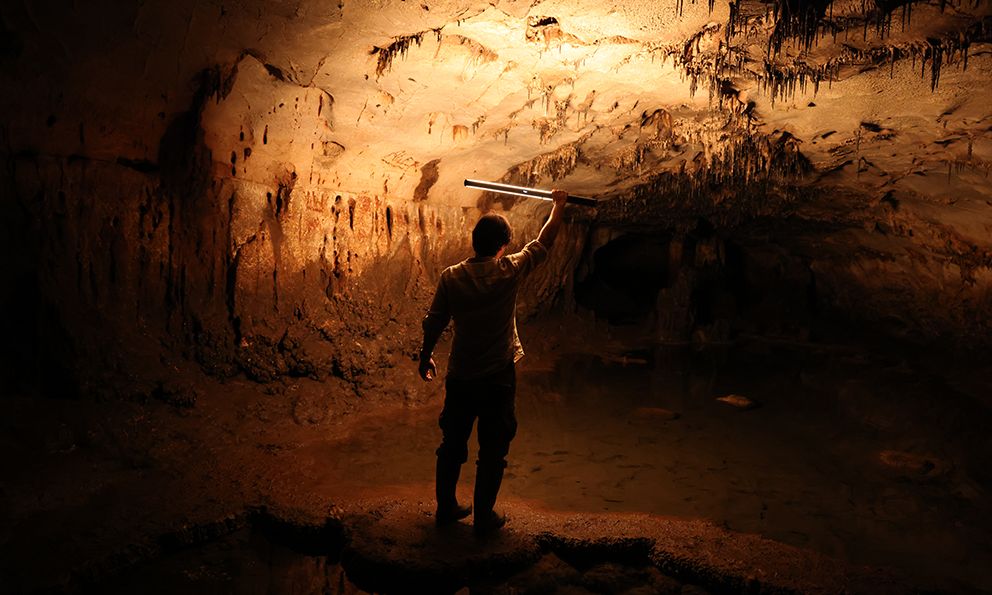Partly flooded chamber which contains most of the motifs
Credit: A Ruiz-Redondo/V Barciela/X Mart
A collection of more than 100 ancient works discovered in Spain has been revealed as a "major Palaeolithic art sanctuary". Archaeologists unearthed the paintings and engravings, thought to be at least 24,000 years old, in a cave in the east of the country in 2021.
An article outlining the discoveries was published last month in the UK-based Antiquity journal. “Further work in 2023 allowed us to identify the site […] given the quantity and variety of motifs and the richness and detail of its technical features,” say the authors; including Aitor Ruiz-Redondo, senior lecturer of Prehistory at the University of Zaragoza and research affiliate at the University of Southampton, UK.
The ancient works were found in a 500-metre-long cave in Cova Dones, a site located in Millares near Valencia after the archaeology team spotted a painting of an extinct wild bull (auroch) on the cave wall. At least 19 confirmed animal representations, including hinds, horses, aurochs, and deer can also be seen on the walls, according to the new study on the cave art. Unusually, the majority of the paintings have been made using clay, a rarely used technique in Palaeolithic art (prehistoric painting and drawing).
Ruiz-Redondo told The Independent newspaper: “Animals and signs were depicted simply by dragging the fingers and palms covered with clay on the walls. The humid environment of the cave did the rest. The ‘paintings’ dried quite slowly, preventing parts of the clay from falling down rapidly, while other parts were covered by calcite layers, which preserved them until today.”
The authors add in Antiquity that “future work will continue surveying the cave walls and will focus on the apparently unique technical aspects of the rock art as well as its chronology and archaeological context”.
“The large number of motifs and the variety of techniques involved in their creation make the cave the most important Palaeolithic cave art site on the eastern Mediterranean coast of the Iberian Peninsula. In fact, it is probably the Palaeolithic cave with the greatest number of motifs discovered in Europe since Atxurra (Bizkaia), in 2015,” says a statement from the University of Southampton, UK, which is affiliated with the archaeology project.

